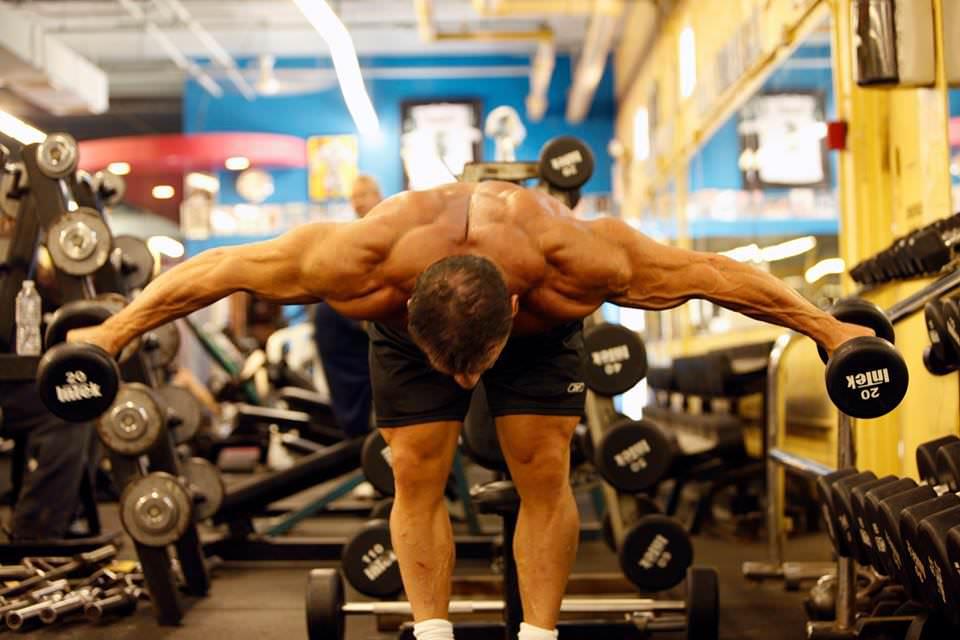

Ultimate Circuit Training Workout
Table of Contents
Ultimate Circuit Training Workout
By Joe Palumbo, IFBB Pro
The principle of circuit training is to utilize a group of strength exercise one right after another. Sounds simple right? Well if done correctly it is. There are numerous circuit training programs available to choose from however many of them fall short on training the entire body. The circuit training I use and recommend hits all the muscle groups aerobic and anaerobic. By incorporating individual “stations” as part of a whole-body circuit, you’re guaranteed to hit every major–and minor–muscle group. It is designed for everyone to follow, beginners to advance. Circuit training offers the best of both worlds by allowing you to combine intervals of high-intensity cardio with weight training for a comprehensive and seriously hardcore workout.
To make it simple I have designed the program into 3 phases. For the beginners please start with phase 1, phase 2 for the intermediate and phase 3 for the advance. Using a three day a week training program any three days can be used just allow a day off in-between because it is designed to allow full recovery; the muscle you train first will not be trained again for 5 days. This is an extremely important aspect of good and effective training program, and unfortunately over looked by many. Circuit training is great because it incorporates “rest days” into your weight training program allowing time for your muscles to recovery in between workouts. Don’t forget that your body only builds muscle tissue when you are not weight training. Circuit training classes consist of about 8-12 stations. These are usually completed for 30-90 seconds with 1 minute rest between each station. Progression can come through either increasing the station time with increased reps. A total of 3 circuits is typical with 2-3 minutes rest between each circuit. Each exercise is performed for a specified number of repetitions or for a set time before moving on to the next exercise. The exercises within each circuit are separated by a short rest period, and each circuit is separated by a longer rest period. The total number of circuits performed during a training session may vary from two to six depending on your training level (beginner, intermediate, or advanced), your period of training (preparation or competition) and your training objective.
PHASE 1 Set weights and reps according to your Level of fitness. The beauty of circuit training is, it can easily be adjusted to fit individual goals, for example, adding more Cardio if you need weight reduction or speed, or heavier weights to add size and strength, use less weight with more reps for toning, stamina and endurance.
Each day contains three circuits, start off light and adjust the sets and reps, as it becomes too easy. If this is your first time circuit training it may take a couple of weeks to complete all three circuits in phase 1. Give your self-3 to 4 weeks to fine tune the routine until it runs smooth and less rest time is needed. Start out slow; let your body get familiar with the exercise and the routine. It is important to do one exercise right after the other so be prepared.
Day 1 is chest, shoulders, triceps, and abs. Day 2 is quads, hamstring, and calves. Day 3 is back, biceps, forearm and abs. Cardio is performed on each day to your individual goals.
CIRCUIT TRAINING EXERCISES (1 set of each)
DAY 1
Chest Incline Press Machine
Shoulders Seated press ups
Cardio Jump rope 2 min.
Triceps Press Down
Abs Sit ups 20-30 reps
Cardio Run 3 min.
Circuit 1 completed rest 2 min. and move on
Shoulders Side laterals
Cardio Jump rope 2 min
Chest Peck Deck Machine
Abs Hanging Knee ups
Triceps Triceps Extensions
Cardio Run 3 min.
Circuit 2 completed rest 2 min and move on
Triceps Dips
Abs Crunches
Cardio Jump rope 2 min
Shoulders Rear Laterals
Chest Seated Chest Press
Cardio Run 3 min.
Circuit 3 completed Great Job!
DAY 2
Quads Machine Squat
Calves Standing Calf Raises
Cardio Jump Rope 2 min
Hamstring Lying Leg Curls
Plyometric Jump Box
Cardio Run 3 min.
Circuit 1 completed rest 2 min. and move on
Hamstring Single Curls
Plyometric Jump Box
Cardio Jump rope 2 min.
Quads Leg Press
Calves Seated Calf Raises
Cardio Run 3 min.
Circuit 2 completed rest 2 min and move on
Plyometric Jump Box
Calves Single Calf Raises
Cardio Jump rope 2 min.
Hamstring Single leg Curls
Quads Leg Extension
Cardio Run 3 min.
Circuit 3 completed
DAY 3
Back Pull Downs or Pull ups
Biceps Preacher Curl
Cardio Jump Rope 2min
Forearms Reverse Curls
Lower Back Hyper Extensions
Abs Crunches
Cardio Run 3 min
Circuit 1 completed rest 2 min and move on
Abs Leg Raises
Back Seated Row Machine
Lower back Dead Lifts
Cardio Jump rope 2 min
Biceps Standing Curls
Forearms Hammer curls
Cardio Run 3 min
Circuit 2 completed rest 2 min and move on
Back T-Bar Rows
Cardio Jump Rope 2 min
Biceps One Arm Curls
Forearms Reverse curls
Lower Back Dead Lifts
Abs Sit-ups
Cardio Run 3 min
Circuit 3 completed
Warm up thoroughly before starting the circuit training session. Perform any type of low intensity, aerobic exercise for 10-15 minutes. Follow with 10 minutes of stretching to all the major muscle groups.
Advantages of circuit training are:
- Develops strength and endurance
- Appropriate form of training for most sports
- Can be adjusted to suit age, fitness and health of the athlete
- Exercises are simple enough to make each athlete feel a sense of achievement in completing them
- A wide range of exercises to select from which will maintain the athlete’s enthusiasm

















